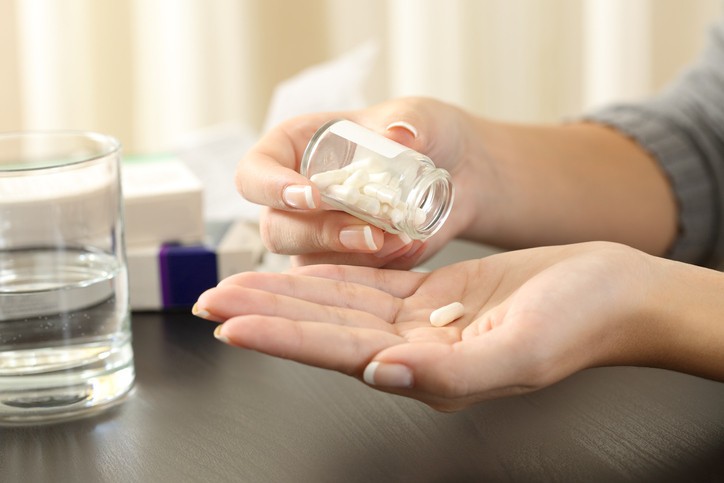Acetaminophen, a common pain reliever and fever reducer found in Tylenol and many over-the-counter (OTC) medications, is generally safe when used as directed. However, accidental overdoses can occur, leading to serious liver damage. It’s crucial to understand the safe dosage and potential risks associated with acetaminophen to protect your health. This article will delve into the recommended daily limits, factors affecting safe dosage, and practical tips to avoid exceeding the maximum amount.
Understanding Acetaminophen and Its Uses
Acetaminophen is effective for managing pain and reducing fever. Unlike nonsteroidal anti-inflammatory drugs (NSAIDs) like ibuprofen and naproxen, acetaminophen doesn’t typically cause stomach irritation. This makes it a suitable option for individuals who cannot tolerate NSAIDs, particularly older adults managing chronic pain.
However, it’s essential to note that acetaminophen has a narrower safety margin compared to NSAIDs. While NSAIDs can cause adverse effects, a much larger quantity is required to reach a dangerous level. Overdosing on acetaminophen can lead to severe liver damage, potentially requiring a liver transplant or even resulting in death.
Alt: Woman carefully takes an acetaminophen pill from a bottle, highlighting the importance of proper dosage.
Decoding the Safe Dosage of Acetaminophen Per Day
The body processes acetaminophen by breaking it down and eliminating it through urine. However, a portion of the drug transforms into a liver-toxic byproduct. Exceeding the recommended dosage, either at once or over a few days, can cause a buildup of this toxin, overwhelming the liver’s capacity to manage it.
For a generally healthy adult, the maximum daily dosage should not exceed 4,000 milligrams (mg) from all sources combined. Nevertheless, some individuals may experience liver toxicity at doses nearing this 4,000 mg limit. To stay on the safe side, it is best to limit your acetaminophen intake to 3,000 mg per day, especially if you frequently use it. This lower limit can help prevent unintentional overdoses and protect your liver health.
Key Precautions to Stay Within Acetaminophen Limits
To prevent accidental acetaminophen overdose, keep the following precautions in mind:
- Consider all sources: Remember that acetaminophen is a common ingredient in numerous OTC medications, including cold, cough, and flu remedies. Always check the label to see if a product contains acetaminophen before taking it alongside other medications.
- Pay attention to milligrams per pill: Acetaminophen pills come in various strengths, such as 325 mg, 500 mg, and 650 mg. Be especially careful when using higher-dose pills (500 mg or 650 mg) to avoid unintentionally exceeding the daily limit.
- Follow dosage instructions: Adhere to the recommended dosage on the product label. Avoid taking more than the suggested amount, even if your pain or fever persists. Smaller individuals should aim for the lower end of the recommended dose range (3,000 mg).
- Be mindful of alcohol consumption: Alcohol can increase the liver’s production of toxic byproducts when metabolizing acetaminophen. Men taking acetaminophen should limit themselves to no more than two standard alcoholic drinks per day, while women should have no more than one.
- Consider potential drug interactions: Consult your doctor or pharmacist about potential interactions between acetaminophen and your prescription medications. Some medications can increase the risk of liver damage when taken with acetaminophen.
Acetaminophen Dosage Chart
Here’s a quick reference guide for safe acetaminophen dosages:
| 325 mg | 500 mg | 650 mg Extended Release | |
|---|---|---|---|
| How many pills at a time? | 1 or 2 | 1 or 2 | 1 |
| How often? | Every 4 to 6 hours | Every 6 to 8 hours | Every 8 hours |
| Safest maximum daily dose for most adults | 8 pills | 6 pills | 4 pills |
| Never take more than this in a 24-hour period | 12 pills (3900 mg) | 8 pills (4000 mg) | 6 pills (3900 mg) |


Alt: Acetaminophen dosage chart summarizing safe limits for different pill strengths and frequencies.
It’s always best to take the lowest effective dose and aim for a maximum daily intake closer to 3,000 mg. If you require high doses of acetaminophen regularly for chronic pain, consult with your healthcare provider for personalized recommendations.
When to Seek Medical Advice
While many people take acetaminophen safely, it’s important to be aware of the potential risks and to seek medical advice when necessary. Here are some scenarios where consulting a healthcare professional is recommended:
- Chronic Pain Management: If you find yourself needing to take high doses of acetaminophen for chronic pain, it’s crucial to seek guidance from your doctor. They can assess the underlying cause of your pain, explore alternative treatment options, and determine the safest approach for long-term pain management.
- Pre-existing Liver Conditions: Individuals with pre-existing liver conditions, such as hepatitis or cirrhosis, should exercise extra caution when using acetaminophen. Even standard doses can pose a risk to those with compromised liver function. Medical supervision is essential to ensure the safe use of acetaminophen.
- Suspected Overdose: If you suspect that you or someone you know has taken too much acetaminophen, seek immediate medical attention. Symptoms of an acetaminophen overdose may include nausea, vomiting, abdominal pain, and jaundice (yellowing of the skin and eyes). Prompt treatment can help minimize liver damage and prevent serious complications.
- Medication Interactions: If you are taking multiple medications, especially prescription drugs, it’s essential to consult with your doctor or pharmacist to check for potential interactions with acetaminophen. Some medications can increase the risk of liver damage when combined with acetaminophen.
Conclusion
Acetaminophen is a valuable medication for managing pain and fever when used responsibly. By understanding the recommended dosage, potential risks, and safety precautions outlined in this article, you can minimize the risk of accidental overdose and protect your liver health. Always read product labels carefully, follow dosage instructions, and consult with your healthcare provider if you have any concerns about acetaminophen use.
